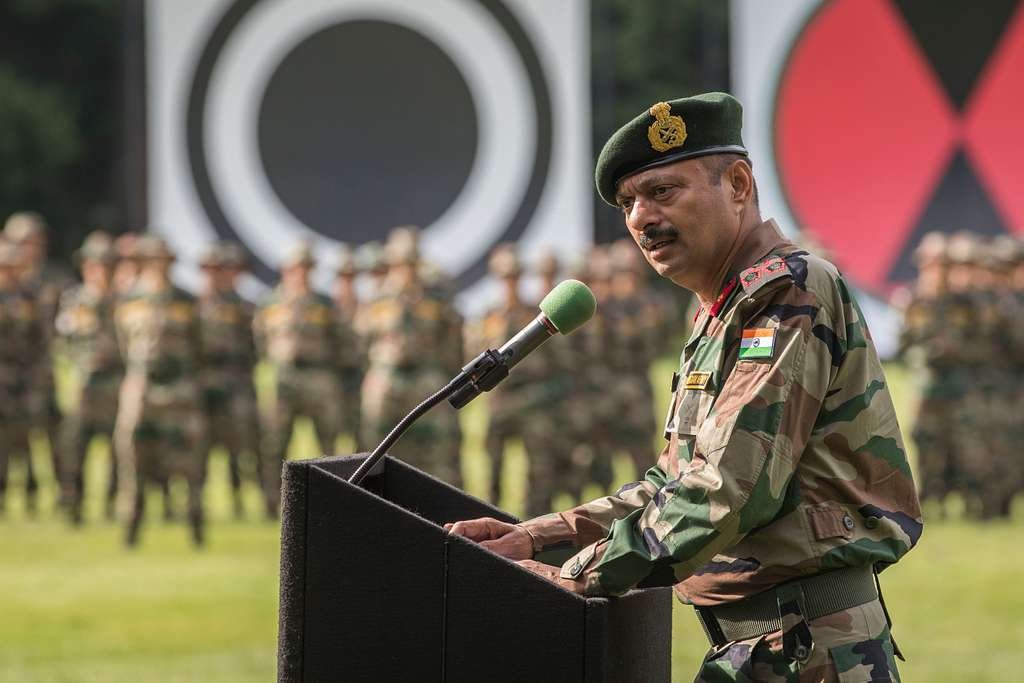Featured Image Credit:
Photo by Indian Army, used under license: Deed – Public Domain Mark 1.0 Universal – Creative Commons
In early May 2025, South Asia found itself teetering on the brink of another full-scale conflict as tensions flared between India and Pakistan over a deadly terrorist attack in Indian-administered Kashmir. The volatile situation, marked by retaliatory airstrikes, missile exchanges, and heightened rhetoric, culminated in a precarious ceasefire mediated by the United States. However, as the dust settles, it becomes evident that there are no clear victors in this episode—only a temporary pause in a cycle of hostility that has defined the region for decades.

Photo by Indian Army, used under license: Deed – Attribution 4.0 International – Creative Commons
The Spark: Terror in Kashmir
The immediate cause of the latest conflict was a brutal terrorist bombing in Srinagar, which killed over 40 civilians and injured dozens. India swiftly attributed the attack to militants based in Pakistan, specifically linking the operation to the group Jaish-e-Mohammed, a claim vehemently denied by Islamabad. The incident reignited longstanding grievances, with India’s government vowing a strong military response.
In the days that followed, the Indian Air Force launched a series of strikes targeting what it claimed were terrorist training camps in Pakistan-administered Kashmir. Pakistan retaliated with its own aerial assaults, and both sides exchanged missile and drone strikes, escalating the conflict to levels unseen since the Pulwama-Balakot standoff in 2019.
Diplomatic Firefighting: The U.S. Steps In
Amid growing international concern, the United States rapidly engaged in backchannel diplomacy to prevent the conflict from spiraling further. President Donald Trump, in his second term, mobilized his foreign policy team including Secretary of State Marco Rubio and Vice President JD Vance to initiate talks with both New Delhi and Islamabad.
Despite Trump publicly claiming credit for the ceasefire, Indian officials stressed that the decision to de-escalate was reached bilaterally between India and Pakistan. Indian Foreign Minister S. Jaishankar stated, “We appreciate international support, but the ceasefire reflects our own strategic choices.”
However, American mediation did play a critical role in pressuring both sides into dialogue. Sources reveal that Washington used both diplomatic and economic levers to encourage restraint, particularly with promises of facilitating trade talks and military de-escalation mechanisms.
Uneasy Calm: Ceasefire Holds, But Tensions Simmer
As of mid-May, the ceasefire appears to be holding, though sporadic skirmishes along the Line of Control (LoC) continue to test its durability. The Indian military has issued stern warnings against further provocations, while Pakistan’s Foreign Ministry maintains its commitment to peace, emphasizing its role as a “responsible nuclear power.”
Reports from AP News and Reuters describe a fragile calm, with local populations in border areas cautiously resuming normal activities. However, the long-term effectiveness of the ceasefire remains in question, as both militaries remain on high alert.
Propaganda Wars and Claims of Victory
Following the announcement of the ceasefire, both nations engaged in a familiar propaganda battle. Indian media hailed the strikes as a successful deterrent, showcasing the country’s military readiness and resolve. Conversely, Pakistani officials portrayed their measured response as a sign of strategic maturity and diplomatic strength.
In a telling headline, The Australian noted that “both sides claim victory in Kashmir conflict as uneasy truce holds,” underscoring the performative aspect of post-conflict narratives in the region. Analysts suggest that the competing victory claims are more about domestic political optics than actual strategic gains.
Strategic Calculations and Regional Implications
Beyond the immediate tactical outcomes, the conflict and its resolution underscore broader geopolitical calculations. For India, the strong military response served as a message of zero tolerance toward cross-border terrorism and bolstered nationalist sentiments ahead of upcoming state elections. For Pakistan, the confrontation provided a unifying cause amid internal political instability and economic challenges.
The U.S., meanwhile, reinforced its role as a regional stabilizer, although not without criticism. Some analysts argue that American involvement risks legitimizing external interference in a bilateral issue, while others contend that U.S. mediation prevented a catastrophic escalation between two nuclear powers.
China’s muted response also drew attention, especially given its close ties with Pakistan and territorial disputes with India. Beijing issued a generic call for peace and stability, avoiding direct involvement—a reflection of its broader strategic interests in maintaining a balance of power in the region.
Civilian Toll and Humanitarian Concerns
Often overshadowed by military and diplomatic maneuvering is the devastating impact on civilians. Dozens of families were displaced during the brief but intense hostilities, with reports of civilian casualties from both sides. Infrastructure damage, especially in rural border villages, has further strained already fragile communities.
Human rights organizations have called for independent investigations into the targeting of civilian areas and the use of drones in populated zones. The UN issued a statement urging both India and Pakistan to uphold international humanitarian law and resume dialogue on broader peace issues, including Kashmir’s disputed status.
Conclusion: A Pause, Not Peace
The ceasefire between India and Pakistan, while welcome, is at best a temporary reprieve in a decades-long saga of mistrust and violence. Without addressing the underlying causes—particularly the Kashmir dispute and cross-border militancy—lasting peace will remain elusive.
As both nations return to a fragile status quo, the international community must remain engaged, not just as crisis managers but as facilitators of sustained dialogue. For now, the Himalayan truce is less a resolution and more a reset, with the haunting possibility that the next spark could ignite an even more devastating fire.


